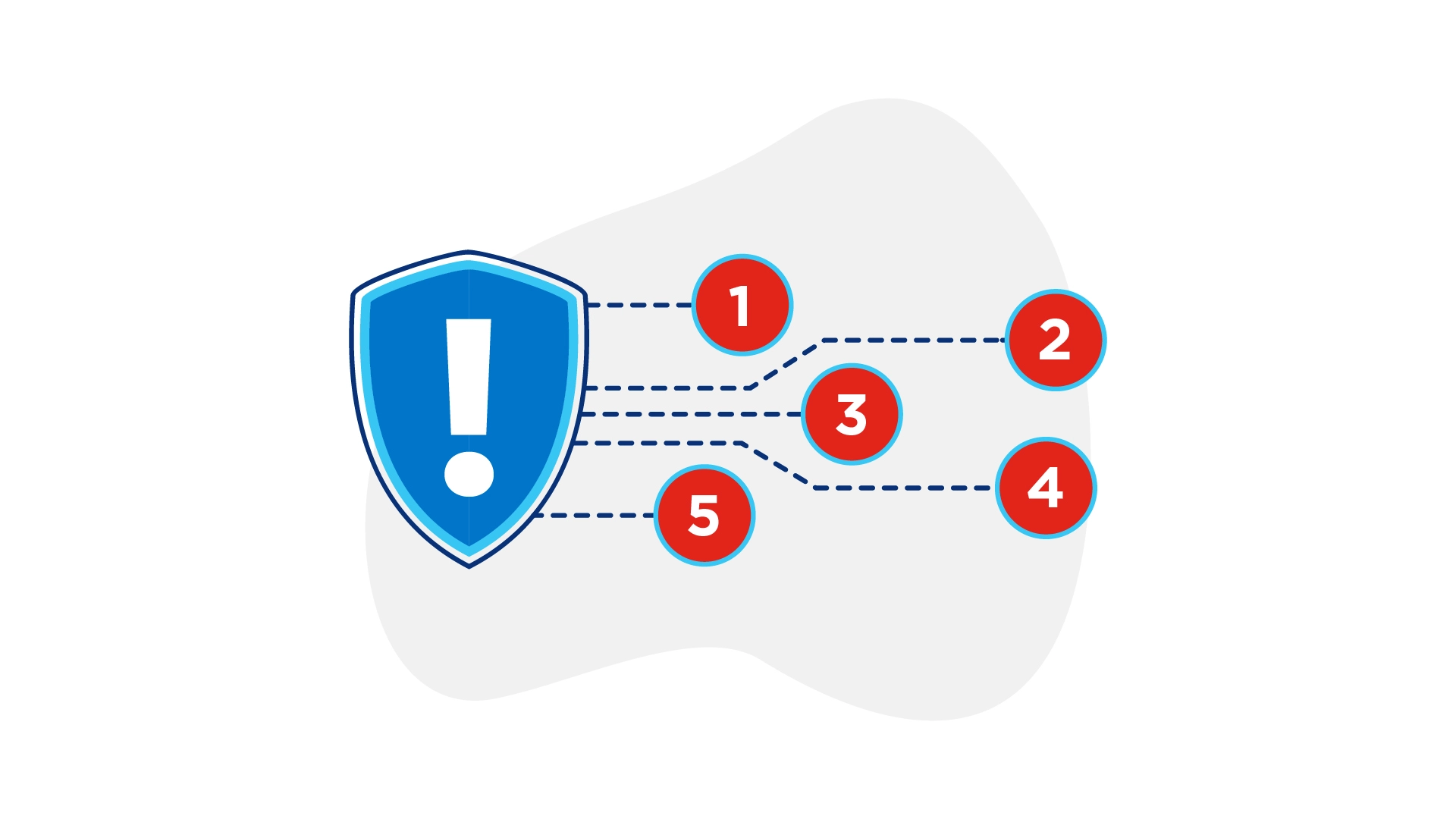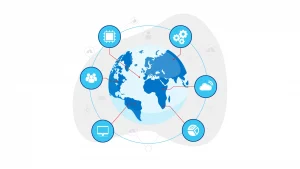Hybrid working and the proliferation of cloud-based applications create five key network security pain points for CIOs at enterprises in the Asia-Pacific region who have not adopted SASE (Secure Access Service Edge) at their organisations.
It is a matter of fact that the network perimeters and attack surfaces of enterprises are constantly expanding.
At the same time, accelerated digital transformation has rendered traditional security solutions inadequate to ensure the reliability, performance, security, and access control required for modern enterprises. The new network security challenges CIOs face demand a whole new management perspective. In light of this, it’s important to examine how newer frameworks such as SASE resolve the key pain points and deliver scalable, secure, and reliable yet easy-to-manage cloud experiences.
5 key pain points created by current network security paradigms cost
Unfortunately, the network security architectures of today’s organisations are designed for operational models that were relevant in the past. The presently deployed network security architectures pose five key challenges that demand a radical departure from the way in which CIOs approach network security.
1. High complexity and costs
As the perimeter of the company’s network expands, most organisations tend to consolidate multiple technology stacks from diverse vendors to manage their network security. These technologies make capex investments inevitable in new security devices, appliances, and solutions as well as power and cabling infrastructure at each location.
Disparate point solutions at multiple locations increase the complexity of managing network security. Not only do they contribute to larger IT sprawl and higher opex and capex, but they also hinder optimal client-cloud access, thereby defeating the very purpose of digital investments.
2. Blurred view of the edge and attack surface
Even after deploying multiple solutions to secure the edge, CIOs face newer security challenges. For example, CIOs remain unsure of the organisation’s security posture because the view of the edge is blurred as new devices and applications are always being added to the network. The attack surface risks remaining undefined in such circumstances.
A security policy based on protecting only the known perimeter of the network is no longer valid. Moreover, perimeters are increasingly software-defined. CIOs need a really flexible technology framework to protect software-defined perimeters. Protection of cloud access, and maintaining quality and speed of internet traffic becomes a growing challenge unless CIOs migrate to modern frameworks to manage security.
3. High data risks with an evolving threat landscape
Today, remote users typically access their organisations’ networks through VPNs. Aggregation of VPNs and firewalls at different points in the network means hackers can access and compromise the entire enterprise network by attacking a single point. In a genuine nightmare situation for CIOs, typical network security architectures that are meant for SaaS applications enable even amateur hackers to compromise data across the organisation.
In addition, the threat landscape keeps evolving, requiring CIOs to be prepared for increasingly complicated cyberattacks involving ransomware or malware. Without cloud-based, centrally managed yet distributed controls for the network security infrastructure, it is a challenge to dynamically act against evolving cyber threats.
4. Inadequate digital experience
Organisations struggle to scale access for users and real-time applications while deploying VPNs, leading to poor digital experiences. Moreover, inadequate digital experiences for internal users and clients due to security-induced latency and complexity adds to the other challenges when users are increasingly looking for experiences comparable to consumer applications.
Latency that lasts for seconds can make or break the user experience, and seriously impact the productivity of workers and the growth of organisations. Complex security architectures also contribute to inconsistent user experiences across devices and applications, and marginalise the impact of digital transformation initiatives.
5. Delay in seizing new digital business opportunities
Complex security architectures can undermine consistent access to cloud services. Today, more sensitive data is located outside the network perimeter than inside it, making consistent cloud access essential to seizing new digital business opportunities as they evolve. Data-intensive enterprise workloads are increasingly concentrated in the cloud than within the enterprise IT infrastructure. Furthermore, instant and seamless access to SaaS applications and public clouds is crucial to business agility and flexibility.
SASE: A modern solution for network security pain points
It is clear that the challenges posed by expanding network perimeter and attack surfaces need a radically new approach to cybersecurity, beyond the point solutions that are commonly in use today. SASE, which stands for Secure Access Service Edge, is a relatively new technology framework that efficiently and cost-effectively resolves the evolving network security challenges that faze CIOS of digital enterprises.
How does SASE solve the new network security pain points posed by working from anywhere and accelerated digital transformation? SASE combines, synchronises, and orchestrates five key networking technologies to solve the cybersecurity pain points: SD-WAN, Fire Wall as a Service (FWaaS), Cloud Access Security Broker (CASB), Secure Web Gateway, and Zero Trust Network Access (ZTNA).
Unlike point-based solutions, SASE is designed with the end user as the focus. It is based on the concept of zero trust, where as long as a user can verify their identity and connecting device, location is not an obstacle to accessing cloud services. Built on a software-defined perimeter, SASE helps trusted users access only the resources they require and nothing else.
Traditional VPN solutions centralise the checkpoints to the network, increasing data risk. SASE distributes the checkpoints across various regions and locations to improve the efficiency of network resource access. In addition, it reduces the latency that may occur in the centralised hub and spoke model. Instead of using separate point tools to control the security architecture components, SASE offers one common cloud-based tool.
The centralised toolset enhances visibility and control across the systems. At the same time, organisations can set and enforce cybersecurity policies at the edge of the network, and manage and orchestrate the cloud-based tool in the cloud itself.
SASE helps workers stay productive and facilitates the seamless access of services by ensuring that applications — and data they require — are always available, optimised for best performance, and thoroughly protected, regardless of where users access the network from. Likewise, the network security framework delivers services no matter where workers are located. SASE also solves the key pain points by optimising and boosting the performance of applications among individual users, whether on-premises, the edge, or private and public cloud environments.
Key benefits of SASE
By solving the key network security challenges, SASE helps deliver four key benefits for CIOs.
- Reduces costs and increases efficiency: SASE increases operational efficiency by automating network functions, modernising regional or branch technology, and leveraging virtualised network functions while optimising capex and opex.
- Supports business growth by maximising productivity: SASE helps scale and optimise network and application performance. Regardless of where users are located, SASE improves the access to and response times of cloud applications thereby increasing productivity.
- Limits financial and reputational damage: SASE leverages threat intelligence aggregated across all cybersecurity solutions. Organisations can implement identity-based security policies and introduce cloud-based security controls by using SASE. It helps organisations accelerate the deployment of security and incident response times to control financial and reputational damage.
- Reduces management complexity: Using SASE, organisations can increase visibility and control over the network security infrastructure by consolidating security and networking services. Cybersecurity teams can manage the consolidated services from a ‘single pane of glass,’ usually with just one operator, thereby reducing management complexity.
SASE: An essential solution for digital innovation and growth
Organisations can increase the scope for digital innovation and truly drive value from digital transformation initiatives by using SASE. SASE solves the key network security challenges to provide reliable, secure, and consistent access to protected resources. What’s more, SASE helps CIOs rationalise network security management resources and infrastructure investments by streamlining and securely applying all systems and processes. Ultimately, CIOs can ensure that they can deliver the immersive digital experiences, even in distributed network environments, using an integrated network security approach. After all, this is the essential quality for digital enterprises transitioning toward Industry 4.0.
What’s next?
If you’re ready to get started on your SASE journey, Lumen can help.
As a leader in the 2022 Gartner® Magic Quadrant for Network Services, Global and a diverse network across APAC including China with extended reach across four continents, Lumen has a robust record in supporting enterprises globally to achieve their SASE potential.
For a deep dive into adoption of SASE, watch our 6 steps to simplified SASE adoption webinar right now. Alternatively, you can contact us to arrange a SASE consultation with one of our technical experts.





